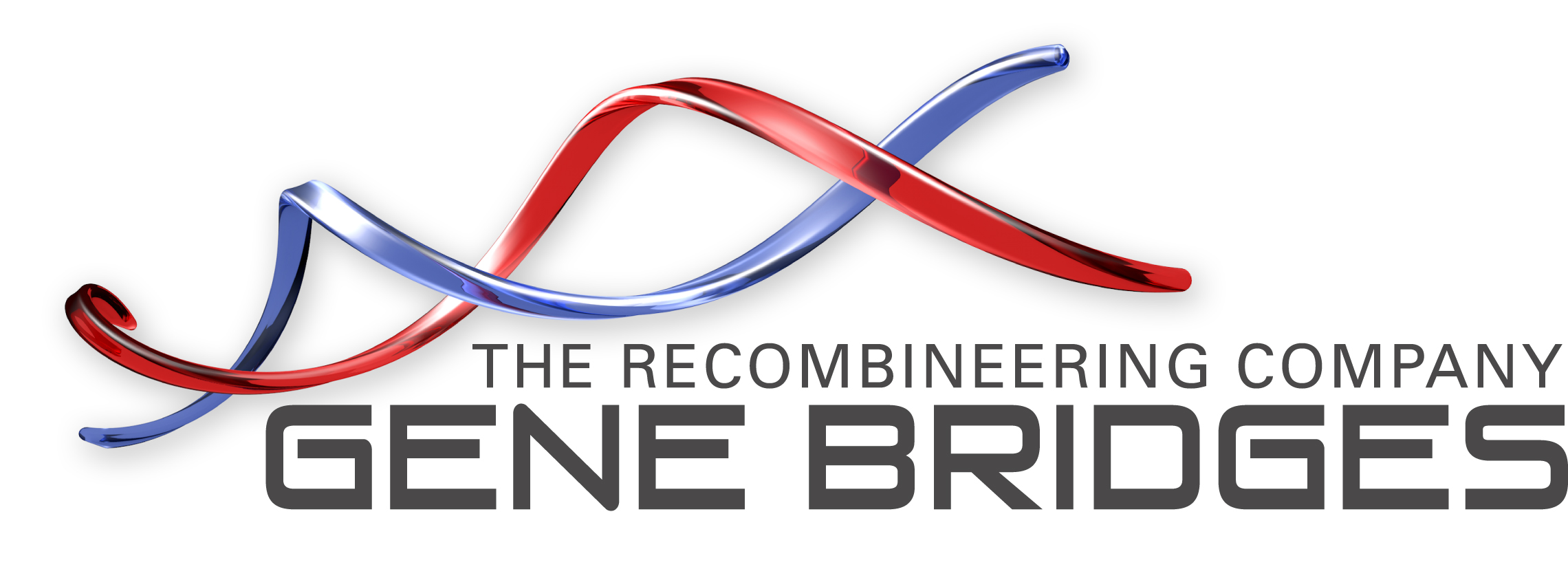Need a fresh alternative to using mouse models?
Tuesday, 3 February 2015
Help is at hand for CRISPR/Cas9 and cloning long homology arms for generating knockout and knockin human cells

Seok et al’s paper has now received almost 600 citations since its publication in PNAS in 2013. This work highlights the long overdue debate on the merits and limitations of animal models and suggests that although different acute inflammatory stresses result in very similar genomic responses in humans, the responses in corresponding mouse models correlate poorly with the human. Of the gene expression changes that changed significantly in humans in response to an inflammatory stimulus, the changes in expression of orthologous murine genes are close to random in matching their human partners (R(2) ~ 0.0 - 0.1).
If you are becoming frustrated with experimentation in mice and want to generate more physiological data using knockin and knockout human cells then you might want to consider trying the Genebridges Red/ET recombineering kit.
Genebridges Red/ET recombineering is the method of choice for recombineering long DNA sequences that can be tough to work with in other cloning systems and is fully compatible with CRISPR/Cas9 methodologies. For recent papers describing the use of Red/ET in conjunction with CRISPR/Cas9 see:
Recessive cardiac phenotypes in induced pluripotent stem cell models of Jervell and Lange-Nielsen syndrome: Disease mechanisms and pharmacological rescue. Zhang M, D'Aniello C, Verkerk AO, Wrobel E, Frank S, Ward-van Oostwaard D, Piccini I, Freund C, Rao J, Seebohm G, Atsma DE, Schulze-Bahr E, Mummery CL, Greber B, Bellin M Proc Natl Acad Sci U S A. 2014 Dec 16;111(50):E5383-92.
Polyglutamine Disease Modeling: Epitope Based Screen for Homologous Recombination using CRISPR/Cas9 System. An MC, O'Brien RN, Zhang N, Patra BN, De La Cruz M, Ray A, Ellerby LM. PLoS Curr. 2014 Apr 15;6. pii: ecurrents.hd.0242d2e7ad72225efa72f6964589369a. doi: 10.1371/currents.hd.0242d2e7ad72225efa72f6964589369a.
For more information visit the Genebridges website and place your order through Cambio.
For further information on this lively debate please see:-
Blog article
Genomic responses in mouse models poorly mimic human inflammatory diseases.
Seok J, Warren HS, Cuenca AG, Mindrinos MN, Baker HV, Xu W, Richards DR, McDonald-Smith GP, Gao H, Hennessy L, Finnerty CC, López CM, Honari S, Moore EE, Minei JP, Cuschieri J, Bankey PE, Johnson JL, Sperry J, Nathens AB, Billiar TR, West MA, Jeschke MG, Klein MB, Gamelli RL, Gibran NS, Brownstein BH, Miller-Graziano C, Calvano SE, Mason PH, Cobb JP, Rahme LG, Lowry SF, Maier RV, Moldawer LL, Herndon DN, Davis RW, Xiao W, Tompkins RG; Inflammation and Host Response to Injury, Large Scale Collaborative Research Program. Proc Natl Acad Sci U S A. 2013 Feb 26;110(9):3507-12. doi: 10.1073/pnas.1222878110. Epub 2013 Feb 11.
Genomic responses in mouse models greatly mimic human inflammatory diseases. Takao K, Miyakawa T.
Proc Natl Acad Sci U S A. 2015 Jan 27;112(4):1167-72. doi: 10.1073/pnas.1401965111. Epub 2014 Aug 4.
Mice are not men. Warren HS, Tompkins RG, Moldawer LL, Seok J, Xu W, Mindrinos MN, Maier RV, Xiao W, Davis RW. Proc Natl Acad Sci U S A. 2015 Jan 27;112(4):E345. doi: 10.1073/pnas.1414857111. Epub 2014 Dec 24. No abstract available.
Genomic responses to inflammation in mouse models mimic humans: We concur, apples to oranges comparisons won't do. Shay T, Lederer JA, Benoist C Proc Natl Acad Sci U S A. 2015 Jan 27;112(4):E346. doi: 10.1073/pnas.1416629111. Epub 2014 Dec 24. No abstract available.
Reply to Warren et al. and Shay et al.: Commonalities across species do exist and are potentially important.
Takao K, Hagihara H, Miyakawa T. Proc Natl Acad Sci U S A. 2015 Jan 27;112(4):E347-8. doi: 10.1073/pnas.1417369111. Epub 2014 Dec 24. No abstract available.
Article Source:
Cambio / Gene Bridges